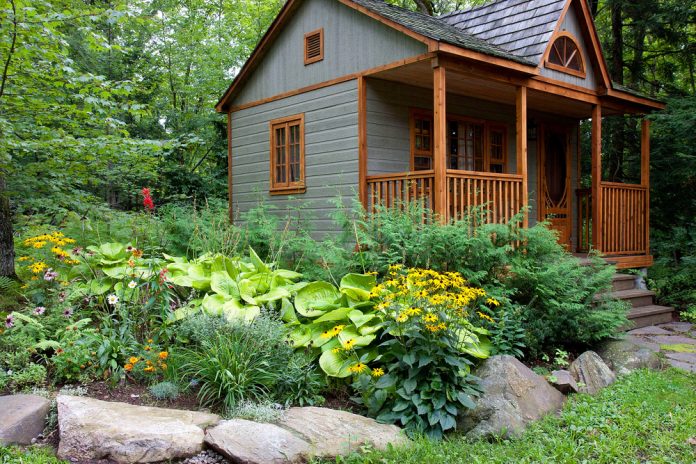Have you ever looked at your backyard and imagined a cozy little home tucked away in the corner? Maybe it’s for your in-laws, a rental unit for extra income, or just a quiet office retreat. If so, you’re already thinking like a homeowner who’s interested in building an ADU — or Accessory Dwelling Unit.
What is an ADU?
ADU stands for Accessory Dwelling Unit. Simply put, it’s a smaller, self-contained home located on the same lot as a single-family house. It can be attached to the main home, converted from an existing space like a garage or basement, or built as a standalone unit in the backyard.
These units typically include a kitchen, bathroom, sleeping area, and a separate entrance. They’re not just “tiny homes” — they can be well-designed, modern, and incredibly functional. Some people build them for family members, others use them for short- or long-term rentals, and some just want extra space to work or relax.
Personally, I’ve had clients use ADUs as everything from guesthouses to full-blown home offices. One client even created a music studio in theirs. The possibilities are truly flexible.
Why Build One?
There are a lot of reasons homeowners are choosing to add ADUs to their properties. First, there’s rental income. In many markets, a well-built ADU can generate $1,000–$2,500 or more in monthly rent. Over time, that can add up to a serious return on investment.
Others see it as a multi-generational living solution. Aging parents can live nearby but still maintain their independence. Grown kids who aren’t quite ready to leave the nest can have their own space. Or it might just be a quiet escape when you need a break from your own household.
Beyond lifestyle and financial perks, ADUs can also increase your property value. Buyers often see them as a major bonus, especially in areas with housing shortages.
Zoning, Permits, and Rules
Here’s the part where things can get a little complicated — the legal side. Before you start building, you need to make sure your property is zoned to allow an ADU. Rules vary from city to city, and even from neighborhood to neighborhood. Check with your HOA, too, if you have one.
Check your local regulations for restrictions on ADU size, setbacks (how far the structure must be from property lines), height limits, parking requirements, and occupancy rules. Some areas require that the homeowner lives on-site. Others may limit how the ADU can be used (such as prohibiting short-term rentals).
You’ll also need to apply for permits and possibly have plans drawn up by an architect. Don’t skip this step — I’ve seen people forced to tear down unpermitted structures. Trust me, it’s not worth the headache or the fines.
Design and Functionality

Just because it’s small doesn’t mean it has to feel cramped. A good ADU design maximizes space and makes smart use of every inch. Think open floor plans, built-in storage, and lots of natural light. The goal is to create something that’s livable — not just a glorified shed.
You can go ultra-modern or match the style of your main home. Some homeowners opt for a simple studio layout, while others build one-bedroom or even two-bedroom units depending on space and budget. Keep in mind that utilities — water, sewer, electricity — need to be addressed in the design phase too.
In my experience, the best ADUs are the ones that feel like a “real home” rather than an afterthought. Don’t skimp on finishes, especially if you plan to rent it out. It will make a difference in both livability and long-term value.
Financing Your ADU
There are several ways to finance an ADU. Some homeowners use a home equity loan or line of credit. Others choose a cash-out refinance. If you don’t have enough equity, a renovation loan or personal loan might be an option. A few cities even offer incentive programs or grants to encourage ADU development.
Keep in mind that building costs vary widely depending on location, materials, and labor. On average, you can expect to spend anywhere from $75,000 to $250,000 or more. It’s not cheap, but when done right, it can pay off both financially and personally.
If you’re unsure where to start, talk with a lender who understands ADU projects — or reach out to your Realtor (like me!) for referrals to professionals who can help guide the process.
Is an ADU Right for You?

Not every property — or homeowner — is a fit for an ADU. But if you’ve got the space, the zoning, and the budget, it can be a smart, flexible addition to your property. Whether you’re thinking long-term rental income, a home office, or space for family, an ADU offers a lot of potential under one (small) roof.
Talk to your local planning department. Consult with a contractor. And start dreaming about the possibilities. You might be surprised what a well-designed ADU can do for your home — and your life.
FAQs About ADUs
- Do I need a permit to build an ADU?
- Yes, almost all municipalities require permits. Always check with your city or county before starting construction.
- Can I rent out my ADU?
- In many areas, yes. However, local regulations may restrict short-term rentals or require the property owner to live on-site.
- Will an ADU increase my property taxes?
- Possibly. Adding an ADU may increase your property’s assessed value. Check with your county assessor’s office to understand how this works in your area.
- How big can my ADU be?
- It depends on local zoning laws. Some areas allow up to 1,200 square feet, while others limit ADUs to a percentage of the main home’s size.
- Is it worth building an ADU?
- For many homeowners, yes — especially if you plan to rent it out or use it for multi-generational living. Just be sure to weigh the costs and benefits before moving forward.

